Comments can be made by clicking on “Comment” found under each Blog page item. Accepted comments will be published.
A Speakers’ Panel of former CCAHS people can be included in any event related to health legislation and policy, consumerism, and union efforts to improve workplace safety or any related topic. Feel free to contact us for details.
A few words from Co-founder and Chair of the CCAHS Board
It has always been my passion and strong belief that healthcare should be a service rather than a business. At the time we founded the Consumer Commission on the Accreditation of Health Services in 1973, healthcare quality in the United States was poor, corruption was rampant, and patient needs were not being met. Ed Gluckmann and I were outraged that doctors and facilities were not being monitored sufficiently to provide care to communities as promised. HIP was failing and the status quo was unacceptable. We were young and riled up and set out to change the healthcare system to make it more patient centered. We took principled stands to work within the system and demand standards of care. We were not afraid to make noise and let our voices be heard, and presented ideas that are still being talked about today.
The information you’ll discover on this website—documents, papers, publications—all add up to tell the story of a seismic shift in healthcare in the United States. Nearly forty years after we laid the groundwork, the story culminates in March, 2010, when President Obama signed the Patient Protection and Affordable Care Act, the most important health care legislation of our time.
Donald J. Rubin
February, 2015
BACKGROUND AND CONTEXT OF THE FOUNDING OF THE
CONSUMER COMMISSION ON THE ACCREDITATION OF HEALTH SERVICES, INC. (CCAHS)
THE BEGINNINGS OF A CONSUMER MOVEMENT…
Symuel Smith, Executive Director and Leatha Catlett, R.N., Assistant Director, Nursing Services, both working at Morrisania City Hospital, were two individuals whose desire to fight the destruction of that doomed community based City hospital in the South Bronx brought them to Donald Rubin and Edward T. Gluckmann. Their story was the retelling of a story often heard in disenfranchised communities which are isolated from power or influence.
Morrisania Hospital was a part of the Health and Hospitals Corporation (HHC); formerly the City of New York Department of Hospitals. The new HHC was created to improve services for the residents of New York City, in particular and specifically the poor, African-Americans, and Hispanics in the City. The South Bronx in the late 1960’s and early 1970’s was populated by many poor, African-Americans and growing numbers of Hispanics, mostly from Puerto Rico.
Morrisania Hospital was being replaced by a new City hospital known as the North Central Bronx Hospital to be built next door to and connected to Montefiore Hospital, a private sector, non-profit hospital. As part of the deal between the City of New York and Montefiore, Montefiore would staff the hospital with interns and residents and supervisory medical directors and necessary technical and administrative staff through an affiliation agreement. The rationale given for this political payoff to Montefiore Hospital was that it would meet the new HHC mandate to improve care for the poor. Smith and Catlett saw that the under-served communities of the South Bronx would now become the almost never served because the new North Central Bronx Hospital was not located near the South Bronx-Morrisania community, would be subservient to the needs of Montefiore and would rob the City of vital and extremely limited resources.
Health/PAC was an organization of dedicated individuals who also saw the takeover of Morrisania Hospital as part of a master secret plan of Montefiore Medical Center to control medical care and hospitals in the Bronx. Its publications echoed those of Smith and Catlett and many other peoples and organizations. Health/PAC’s publications were starting a fetal movement that needed educated consumers as the midwives of their own health and control over the institutions bearing on their health.
As a product of this mêlée of takeovers of HHC hospitals through affiliation agreements and political efforts to dismantle the City’s commitment to ensure hospital and medical care for the poor and disadvantaged, the concept of a Consumer Commission grew into a reality as Don and Ed met and drafted “A Draft Proposal to Create a Consumer Commission on the Accreditation of Hospitals (CCAH)” dated 2/72. After preliminary discussions with others, the name and focus was changed and expanded by deleting ‘Hospitals’ and adding ‘Health Services’.
Meantime, in the background were voices of liberation, revolution and demands for changes regarding African-Americans, women, minorities and the umbrella movement against the Vietnam War. To this background noise was now added the voices of health consumers.
Initial Board discussions tried to identify exactly who was a consumer and how ‘pure’ must a consumer be? The definitions of who a ‘consumer’ was and how ‘pure’ a consumer had to be had become major issues for the Board. By one definition proposed by a Board member all members of the Board were consumers and according to another there was just one ‘pure’ consumer definition and therefore only one real consumer on the CCAHS Board. Discussions about the definition of ‘consumer’ and consumer purity soon led to a few heated arguments and the resignation of one member of the Board. However more pressing and less ideological matters overcame these potentially divisive conceptual issues. In the end, all consumers on the Board, that is all Board members worked together focusing their disagreements on the best ways to advance the role of consumers in health care delivery.
The CCAHS Professional Advisory Committee (PAC) included eight medical doctors (one serving also on the Board of Directors), one radio host and lawyer specializing in addiction, one registered nurse, one socio-medical researcher, one non-profit hospital insurance company executive and two hospital administrators. The eight medical doctors represented a variety of specialties, medical education positions and medical insurance organizations.
As with many organizations, there was a core of activists whose time and availability was greater than some of the more renowned professionals and executives. Some participated to lend their names and to provide credibility based on their organizational affiliations. Others joined because of the burgeoning interest in consumerism and its application to health matters. A few joined to lend support in more concrete ways including research and writing skills, reviewing copy for publications, and offering low cost offices, supplies, printing, and staff support. Each individual also came with a personal agenda, sometimes disclosed and sometimes not. Initial interest waned with some members of the Board and the PAC. This is a normal development of boards as members wearing many hats, responsible for many projects and interest in many other organizations start to make decisions to continue or not based on their own priorities.
Generally, as time went on, the promises of many movements including health consumerism faltered or did not reach the expectations of many Americans. As the alternative movements and demonstrations against the Vietnam war uprising in America tore at its social fabric, there was a reaction in the first wave of supporters. That reaction included disillusion, anger, disgust and fear that the various movements’ efforts to improve America would go awry; in fact be changed in unpopular, unacceptable and unexpected ways. Many supporters became disillusioned because the changes won; although minor in some cases were more than they wanted. These counter movements within the movements were encouraged by the special interests affected by the necessary and demanded changes. Reaction by those in power should have been more widely anticipated as the long standing rights and prerogatives of the special interests were threatened. It was not long before they would mobilize to protect what they saw as their rights and to take political, social and economic action to ensure that the People did not effectively challenge them.
CCAHS was not immune to the external objective condition changes. Members of the Board of Directors and PAC also changed as individuals resigned, moved, changed jobs, lost interest or retired. These changes influenced the direction and priorities of CCAHS over its nearly twenty year period. These directional changes were reflected in its publications’ content, conferences and finally a book.
As with many consumer organizations which rode on the rising wave of health consumerism, the emerging women’s uprising, the civil rights and anti-war movements, faced strong competition for adequate funding. Many organizations used written periodic publications to spread their vision or call to action. Written hard copy publication communication as we came to learn with the advent of computers, cellular phones and the Internet was an expensive, time consuming and labor intensive effort. Communication relied heavily on land based wired telephone service for the initial consultation and development of concept followed by hard copy distribution by regular mail or hand delivery. The regular mail method took several days to arrive whereas overnight or next day hand delivery was expensive. Lastly, there was the scheduling of face-to-face meetings to carry out work which was sometimes difficult to arrange. Board and PAC meeting dates were usually set months in advance.
Funding was a key factor effecting CCAHS. Initially a few Board members provided cash or in-kind services. They helped bring funding from their clients or employers whose interests were represented. Over time, grants from several foundations, community trusts, Blue Cross of Greater New York, and ultimately the National Science Foundation supported specific programs, projects or publications. To its credit the Board never held funding sources exempt from its reporting. Blue Cross stopped its support after CCAHS published a report Blue Cross considered a breach of confidential information, which in fact was publically available. Blue Cross felt its support required CCAHS to maintain a level of loyalty by not revealing that data.
With this background, we now address the specific issues of publications preserved and available at the Shelley and Donald Rubin Foundation with special thanks to Donald Rubin, Hunter College’s School of Social Work, Edward T. Gluckmann, Lillian Roberts (of D.C. 37, whose printing presses and overall guidance were always there when needed), Judy Wessler, Frank Goldsmith, Alan Brownstein and others who made their personal papers and CCAHS publications available or made themselves available to make this site possible. We also dedicate this site to the members of the Board, PAC and staff who made CCAHS possible.
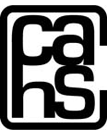
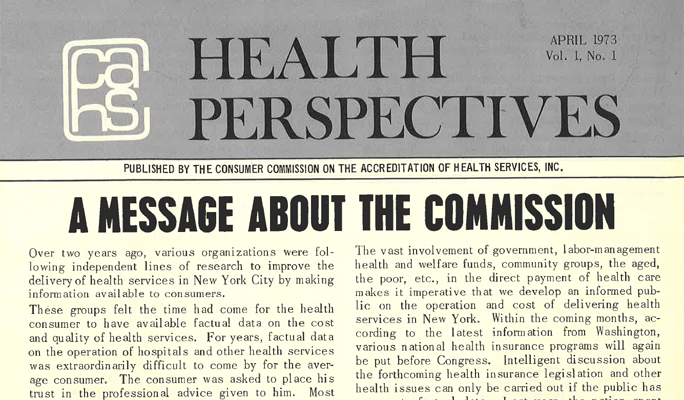
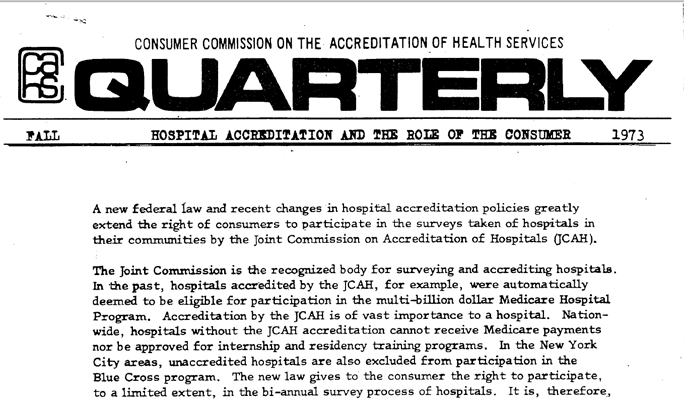
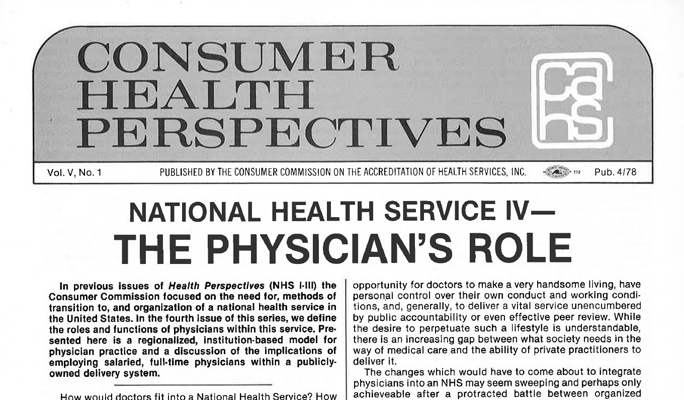


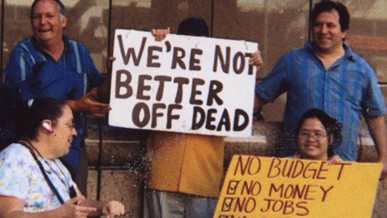

This is one of the most important consumer sites.
.
It surely is. Health consumerism is still needed.